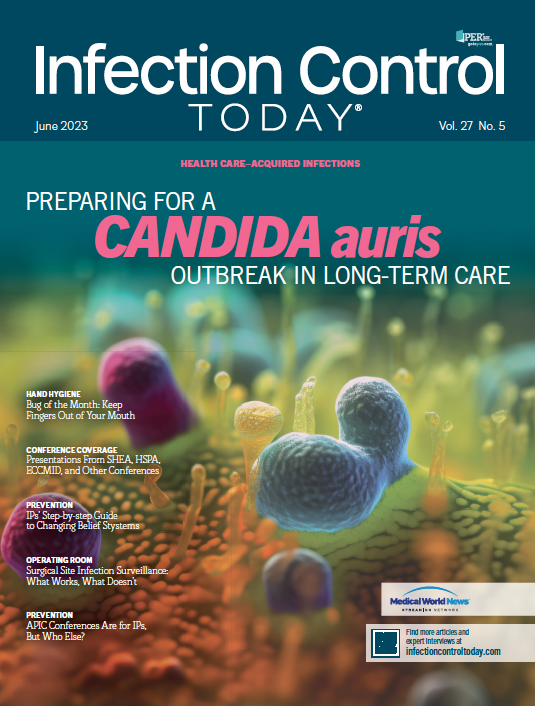HAC and VBP Penalties: Will They Reduce Hospital-Acquired Infections?
The HAC and Hospital VBP penalties were suspended during the COVID-19 pandemic but are now back in place. Are they forcing hospitals to rethink/reestablish previous practices, and what is the impact?
The Hospital-Acquired Condition (HAC) Reduction Program and The Hospital Value-Based Purchasing (VBP) Program are programs to encourage acute hospitals to reduce hospital-acquired infections (HAIs) and other conditions in acute care settings. Together, they use financial motivations to decrease HAIs.
The first program, HAC, “supports the Centers for Medicare & Medicaid Services’ (CMS’) long-standing effort to link Medicare payments to health care quality in the inpatient hospital setting,” according to CMS.gov. VBP incentivizes acute care hospitals with payments for the quality of medical care they provide in the inpatient hospital setting. The payments are adjusted according to the Inpatient Prospective Payment System (IPPS) and are based on the quality of care the hospitals deliver.
During the COVID-19 pandemic, the programs were paused; however, they have been reinstated. Infection Control Today® ICT® spoke with Alice Brewer, MPH, CIC, CPHQ, FAPIC, senior director of clinical affairs for PDI, about how these programs and whether these programs do what they were intended to.
Brewer told ICT, “They paused them during the pandemic. Beginning with essential data collected in 2020, and 2021, they did not create any penalties for hospitals based on data collected in those two years because of the pandemic. For 2022, any data collected under those programs in 2022 will generate a penalty to hospitals if they don't meet the programs’ criteria. The criteria for hospital-acquired conditions [in the HAC program] are centered around observed versus expected events. If a hospital has more hospital-acquired conditions than they would be expected to base on their baseline performance, then they could receive a 1% payment reduction.”
For the HVP, Brewer explained, “the hospitals are measured on clinical outcomes, safety, and infections, and if they don't meet the performance standards center, that program, CMS can withhold 2% of their payment. Essentially, the structure of the programs has stayed the same. For the H VBP, some of those thresholds have changed [slightly]; they've become tighter. You must perform a little bit better on your infections to avoid that penalty under the program.”
For the HVAC penalties, Brewer said, they “can be anything from an infection to a fall to pneumonia that are directly the result of a hospital stay. The patient did not arrive with those conditions.”For the VBP conditions, it includes “HAIs, but also some patient safety-type conditions fall under that program as well.”
How these programs incentivize the hospitals, Brewer told ICT, is that “not only are these programs publicly reported, but any event reported under these programs is available publicly. [And] it also can result in a financial penalty. If you don't perform well enough under these programs, the hospital is penalized financially. It's a big driver for infection prevention and for hospital leadership to try and switch some things up. That financial piece of it that public reporting of infections or problems becomes a great way for infection preventionists to make that business case for introducing a new intervention and introducing new products.”

Newsletter
Stay prepared and protected with Infection Control Today's newsletter, delivering essential updates, best practices, and expert insights for infection preventionists.
From Pandemic to Endemic: How the Protective Face Mask Market Is Evolving
August 2nd 2025Once a symbol of crisis, face masks have evolved into everyday essentials—driven not only by pandemic preparedness but by rising air pollution, cultural shifts, and workplace safety regulations. As innovation and demand grow worldwide, the protective face mask market is poised for long-term expansion well beyond COVID-19.
Sharps Safety Starts with Us: Why Infection Preventionists Must Lead the Charge
August 2nd 2025Sharps injuries remain a silent but serious threat in health care that infection preventionists are uniquely equipped to confront. With underreporting widespread and safety devices underused, it’s time for IPs to step into a leadership role, using their expertise in systems thinking, education, and policy to build a culture where staff protection is as prioritized as patient care.
The Green Revolution in SPD: From Hidden Cost to Frontline Change
August 2nd 2025As climate change accelerates, health care’s environmental impact faces increased scrutiny, with sterile processing departments (SPDs) emerging as key change agents. Often behind the scenes, SPD professionals can lead sustainability by turning routine practices into ecofriendly protocols that protect both patient and planetary health.